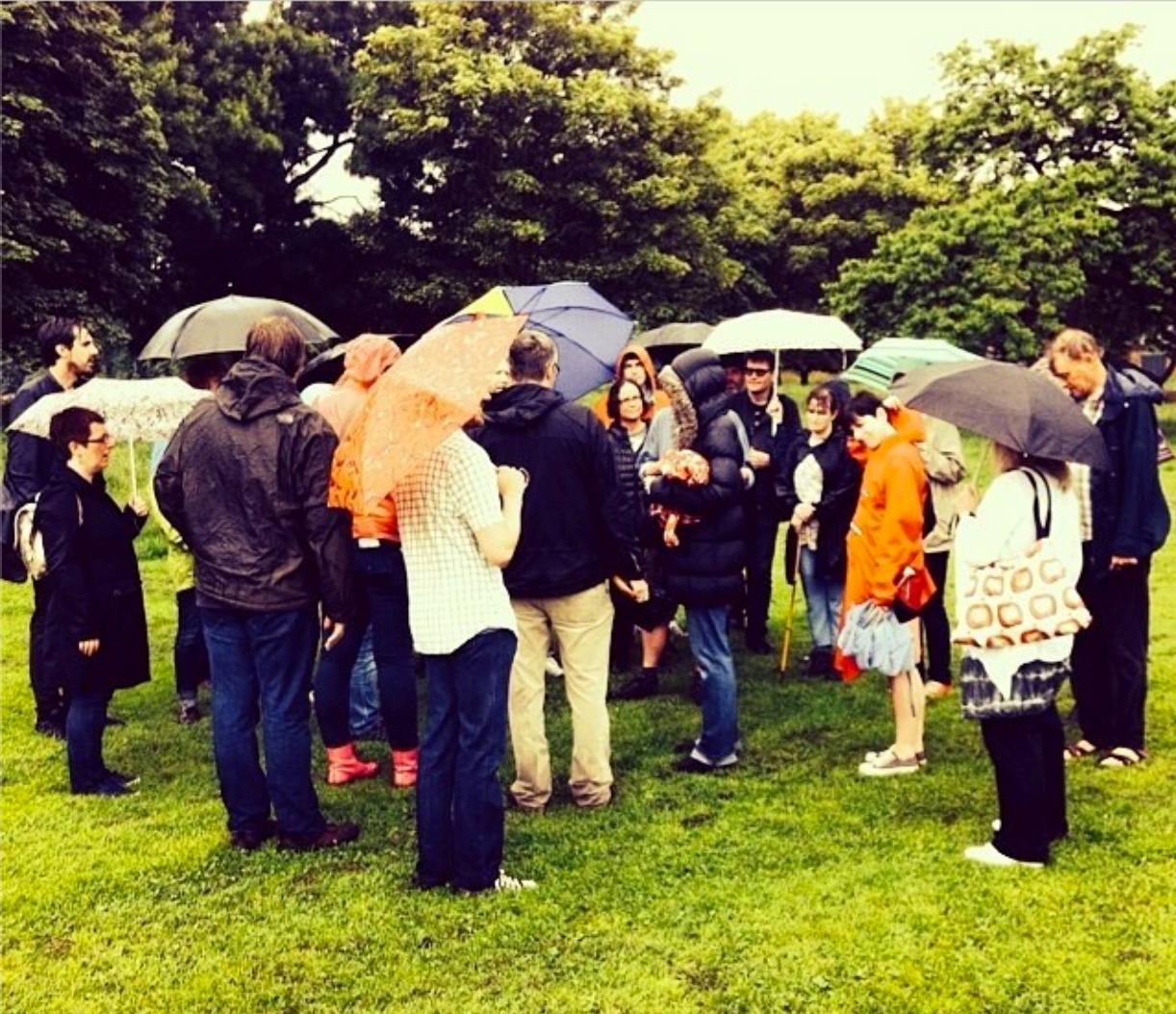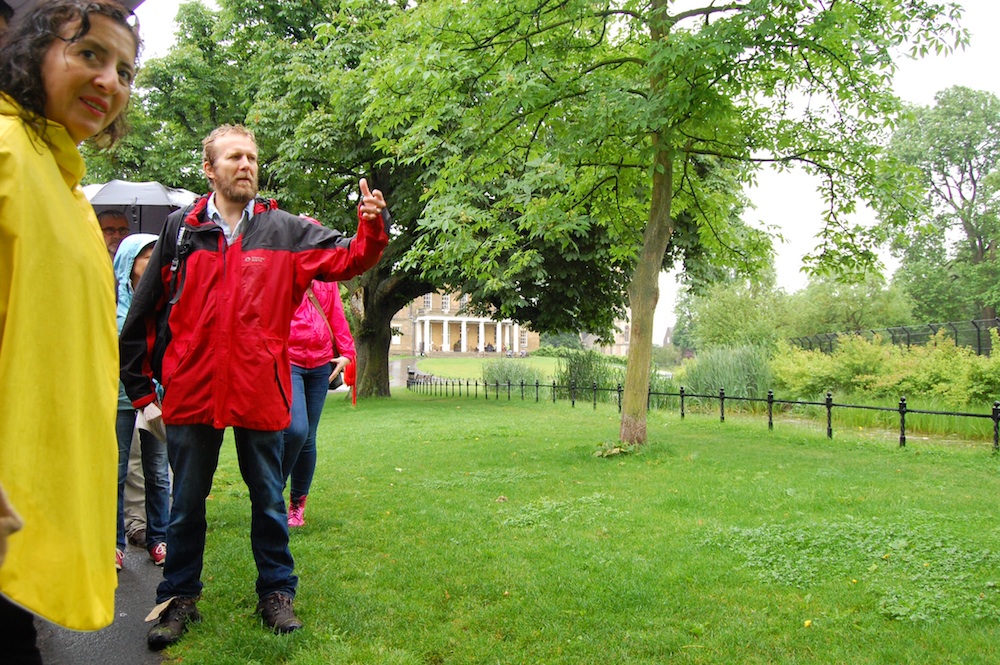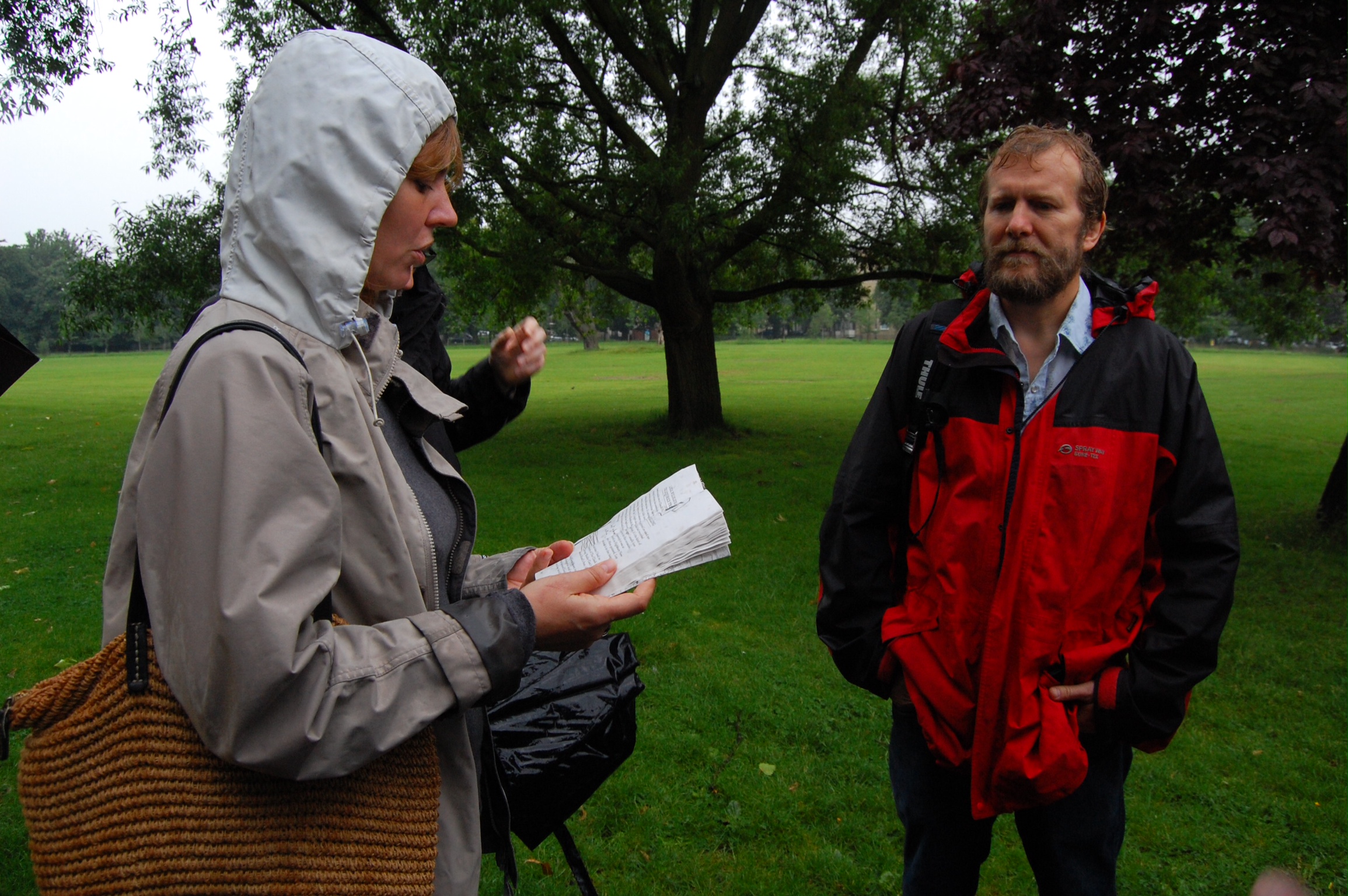My late neighbour, Edna Crome, seemed to know more about Highbury then anyone I know. She was always telling me stories about some aspect of local history, often relating to architecture, football and schools. One afternoon, as we chatted over the garden fence, she started to tell me about St John's Church. I didn't know anything about this and she explained that it was demolished int he early 80s and a block of flats was put up, on the western side of Highbury Park. (Like many old talkative people Edna had never had her stories put down on tape future generations. All I have the memories of the countless conversations, usually conducted over the garden fence or out in the street when we bumped into one another.)
 This spot is is one of my favourite parts of Highbury. When my daughter stared school at the top of the hill I'd sit on the bench at the junction of Highbury Park and Northolme Road and look down into the vale and beyond, marveling at the semi-rural template that lay beneath the concreted scene.
This spot is is one of my favourite parts of Highbury. When my daughter stared school at the top of the hill I'd sit on the bench at the junction of Highbury Park and Northolme Road and look down into the vale and beyond, marveling at the semi-rural template that lay beneath the concreted scene.
I haven't managed to find any photos or illustrations of the old church. In some ways it doesn't matter so much that the church is no longer there. If I concentrate I can see it just as plainly as it was there in front of me. It's the same with other parts of the village. I sit on the viewing bench and imagine the scene without the buildings, imagine looking down over pastures and meadows with the new river winding its way through the landscape from Hornsey over towards Stoke Newington. And there, to the left of the scene, snaking down from the Crouch Hill heights to the west, is the Hackney Brook.
There is still a C of E primary School named after St John's. Going back further there had been at college of St John's around Aubert Park (it was demolished in the mid 40s and a block of flats put in its place) in this area (there still exist some old illustrations of this http://www.antiquemapsandprints.com/p-3679.jpg). Arsenal FC bought part of the college grounds to build their original stadium before the First World War. Going back to the mediaeval era Highbury had been given to the Priory of St John of Jerusalem, also known as the Knights Hospitallers in England. by the landowner Alica de Barrow in 1271. They controlled the area until disbanded by Henry VIII in the 16th century. The thread still survives in the name of the school.
I have a more recent example of this feeling for "ghost buildings" for it is not that long ago that the old tin box factory on Blackstock Road was demolished to make way for a new block of flats. On the other side of the road, where now Il Baccio restaurant and further new flats exist, was an old-fashioned garage.
Unlike some London churches, such as old St Mary's in Stoke Newington, , the Church of St John in Highbury Park was relatively new. It was only consecrated in 1881 so according to the information available didn't even last 100 years as a working church. Perhaps the people of Highbury built simply too many churches in that late 19th-century is their rush to development of the area. As wel as St John's there was also Christchurch a few hundred yards up the road, Saint Augustine's in the smart backstreets of Highbury New Park and St Thomases in St Thomas's Road down in the Vale. 
Almost 20 years ago, when my wife lived above a launderette at the other end of Blackstock Road, I'd sometimes walk southwards until I got to Highbury Vale. And for some reason I never walked up the hill towards Highbury village proper, the Barn and Highbury Fields, as if I wanted to keep some kind of mystery for a later date. So we moved in here together in the late 90s it was with great excitement that I began to map out the territory to the south Blackstock Road and was pleasantly surprised to find old-fashioned little shops and a tree-lined boulevard.
There's a smart new bench now at the junction of Northholme Road and Highbury Park. It's more comfortable than the old one but for some reason I'm less inclined to sit on it for very long. I tell myself that I should spend half a day sitting down at this spot watching life unfold around me and see the changing light over Stroud Green and FInsbury Park as the afternoon unfurls. These days I tell myself I'm too busy to do this. Perhaps one day, soon.






